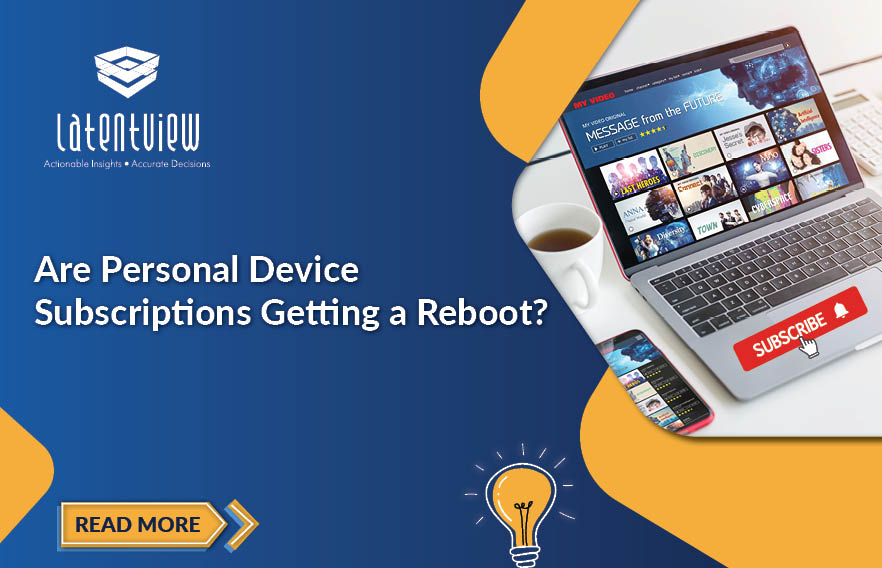‘Subscription Economy’, a phrase coined by Zuora, describes the new business landscape in which traditional pay-per-product (or service) companies are moving toward subscription-based business models. And at the heart of this subscription economy is the idea that customers are happier subscribing to the outcomes they want when they want them, rather than purchasing a product with the burden of ownership.
Since then, the subscription economy has grown, evolved, and even matured in certain industries. While the overall digital subscription economy powered by cloud and e-commerce could top US$1.5 trillion by 2025, there are still a few hundred billion in the taking for other sectors. This means that there is an opportunity for every business to transform to cater to the subscription economy and generate value for customers and their organizations.
We all think of Netflix and gang when we think of subscriptions. But lately, many businesses from diverse sectors have announced or started offering subscription options to their customers. Lululemon, an athletic apparel retailer, launched a membership program for its customers. Panera Bread expanded its coffee subscription (which was launched just before the pandemic) to cover 26 drinks across Panera’s beverage program. WhatsApp is exploring a subscription option, and there is already news about Elon Musk introducing a subscription option in Twitter.
One other interesting area where subscription is making a (re)appearance is in the personal devices space. The early success of Whoop and serious consideration by Apple for iPhone subscriptions could be signals for the next leap in subscriptions for personal hardware.
For the first time, Apple is considering a subscription for the iPhone. It is not a small change for Apple, given that it would hit at the core of its sales numbers – iPhone sales contribute little more than 50% of its revenue of $365 billion. Apple has been successful in selling its iPhone for the full price or through carrier contracts to garner a 54% market share in the US but only 27% globally. As replacement cycles of iPhones are going up from 2 years to 3 years, they may look at it as an option to replace phones faster for subscription users and use the refurbished phones for other markets. As with Apple, where all things are secret, we might never really know the game plan, but the subscription bug seems to have bitten the iPhone as well.
Whoop had a device that cost $500, and in 2019 it pivoted to a subscription model giving the device free to its subscribers. The subscription rose rapidly, indicating a positive acceptance from their target groups. It has also expanded the target groups, where affordability was an impediment before the subscription plan.
I don’t know if it is too early to say that ‘this is the right time to be a consumer’. The deals are getting meatier by the day, driven by hyper-competition and the single-minded focus of many companies to go for subscriber addition more than anything else. As with any evolving trend, there are challenges and opportunities for organizations to address and leverage to create value.
Key challenges in the subscription business model for personal devices:
- Users must see value monthly as the decision points by the customers could be every month for a monthly subscription
- Not all customers would like a subscription plan (yes, there are those who would still want to go the full hog and pay upfront)
- Customers’ expectations of device quality and services like supply chain, warranties, and repairs would be higher, and they would not want a downtime
- Bridging the digital and physical worlds – in a more digital world, the company has better control
There are multiple strategies that companies could adopt to address some of these challenges and emerge stronger from such a business model:
- Focus on the outcomes of the subscribers as key metrics rather than outcomes for the organization. For example, for a fitness device company, the KPIs could be around percentage of users who are meeting their targets, percentage of users who have not shown improvement in the last 7 days, etc. This will enable organizations to keep pushing in the right direction and make the renewal decisions a no-brainer for the subscribers. It is almost like Peter Drucker’s definition of marketing “The aim of marketing is to know and understand the customer so well that the product or service fits him and sells itself.”
- Being flexible in the services and subscription plans – Taking a leaf out of the hyper-competitive streaming services, companies can look at different price points with different services and product configurations. For example, Hulu offers an Ad-supported plan and a No Ads plan which the members can choose based on their preference and affordability. Apple has always played with versions like iPhone SE to expand their target customers and has been successful. Another option is to create bundled offerings that could be very compelling to the target customers.
- Hyper personalization – Easier said than done. It is extremely easy in a digital service, but when it comes to integrating a physical device with a digital service, the options are limited. But that’s where organizations need to innovate and focus on articulating the right value proposition to their customers. The classic communication example of Simon Sinek’s “Start with Why” could be extremely useful.
As the subscription business model evolves in individual sectors, there will be a need for the organizations to go beyond ‘customer is the king’ to ‘content/product/service’ is the king. The focus will have to rapidly shift towards better engagement and retention of subscribers rather than just acquisition. The personal devices subscription companies can look at examples in streaming services and rationalize their learning curve and get a head start on leveraging advanced analytics to drive their business decisions. But till such a thing happens, ‘customer will be the king’.




